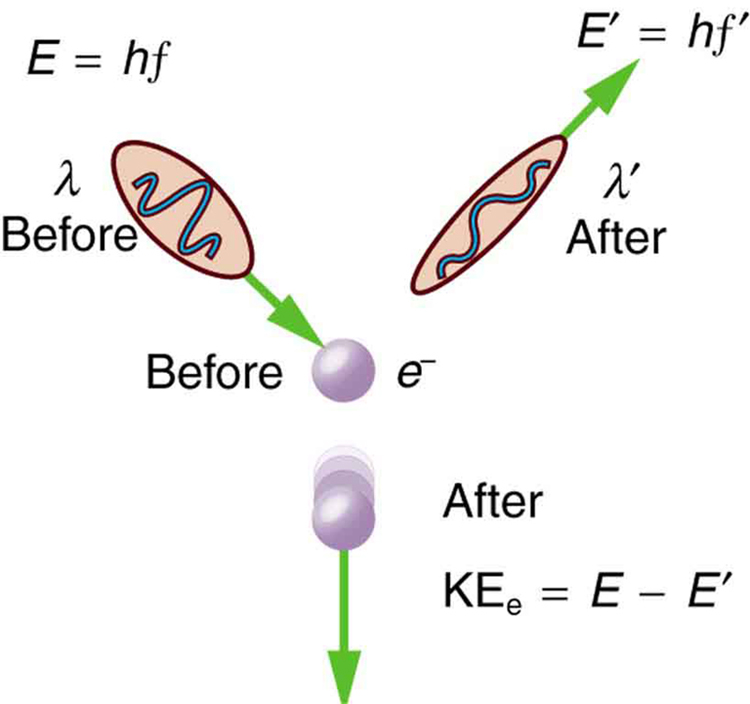| << Chapter < Page | Chapter >> Page > |
Not only is momentum conserved in all realms of physics, but all types of particles are found to have momentum. We expect particles with mass to have momentum, but now we see that massless particles including photons also carry momentum.
Momentum is conserved in quantum mechanics just as it is in relativity and classical physics. Some of the earliest direct experimental evidence of this came from scattering of x-ray photons by electrons in substances, named Compton scattering after the American physicist Arthur H. Compton (1892–1962). Around 1923, Compton observed that x rays scattered from materials had a decreased energy and correctly analyzed this as being due to the scattering of photons from electrons. This phenomenon could be handled as a collision between two particles—a photon and an electron at rest in the material. Energy and momentum are conserved in the collision. (See [link] ) He won a Nobel Prize in 1929 for the discovery of this scattering, now called the Compton effect , because it helped prove that photon momentum is given by
where is Planck’s constant and is the photon wavelength. (Note that relativistic momentum given as is valid only for particles having mass.)

We can see that photon momentum is small, since and is very small. It is for this reason that we do not ordinarily observe photon momentum. Our mirrors do not recoil when light reflects from them (except perhaps in cartoons). Compton saw the effects of photon momentum because he was observing x rays, which have a small wavelength and a relatively large momentum, interacting with the lightest of particles, the electron.
(a) Calculate the momentum of a visible photon that has a wavelength of 500 nm. (b) Find the velocity of an electron having the same momentum. (c) What is the energy of the electron, and how does it compare with the energy of the photon?
Strategy
Finding the photon momentum is a straightforward application of its definition: . If we find the photon momentum is small, then we can assume that an electron with the same momentum will be nonrelativistic, making it easy to find its velocity and kinetic energy from the classical formulas.
Solution for (a)
Photon momentum is given by the equation:
Entering the given photon wavelength yields
Solution for (b)
Since this momentum is indeed small, we will use the classical expression to find the velocity of an electron with this momentum. Solving for and using the known value for the mass of an electron gives
Solution for (c)
The electron has kinetic energy, which is classically given by
Thus,

Notification Switch
Would you like to follow the 'College physics for ap® courses' conversation and receive update notifications?